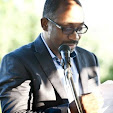Author's comment
It is impossible to think of the Golden Age of Mexican cinema without “the Cuban rumberas” that activated the mambo of the Cuban Dámaso Pérez Prado in the forties; It is impossible to think of Hollywood in the fifties without its great actresses turned into stars like Rita Hayworth, Abbe Lane, Marilyn Monroe, Esther Williams or Fred Astaire, or musicals like West Side Story ; It is impossible to think of European cinema without Silvana Mangano, Sofia Loren, Brigitte Bardot or Anita Ekberg. All these impossible things have only one thing in common, that all these women and men danced rumba, son, mambo and chachachá in their best-known films, Cuban rhythms that were consolidated worldwide between the end of the 1930s and the 1960s. xx.
This book wonders why Sofia Loren dances the song: Italian mambo, in the film Pane, Amore e… , and says that it is a Brazilian rhythm while being Cuban; why La Dulce Vita (1960) with Mastroniani and Anita Ekberg, the mambo and chachachá are vital in its plot, and how Bruce Lee, before being known as a karate fighter, was the king of chachachá in a movie. Without forgetting the fascination of Marlon Brandon or Nat King Cole for Cuban rhythms traveling to the island to play or count them while Benny Moré or Celia Cruz reigned there with boleros, mambos and sones in Cuban cabarets that were later taken to Cuban cinema and Mexican.
A book that can be read and verify its arguments with the songs on YouTube and remember being vintage while we read, although it also analyzes what happened on the island with the revolutionary and independent cinema with music up to the present day. That's what it's all about.
After writing this book, it is not difficult to summarize that there is a triumvirate of Cuban rhythms that have triumphed universally in the cinema: the rumba, the mambo, and the bolero; and without a doubt, there is also a triumvirate of composers that demonstrate it: Dámaso Pérez Prado, Ernesto Lecuona and Oswaldo Farrés; these rhythms and authors can be found in all the decades of the last and only century of talkies in the world, at least in three continents: America, Europe and Asia, this makes Cuban music at a historical level, undoubtedly the empowerment largest of our culture at a universal level as tobacco or rum has been since the 19th century.
The fault that not everyone always identifies her as Cuban in the movies is undoubtedly because in the last sixty years and three years since 1959, the Cuban revolution has not promoted the musicians who left the island when they took power with a military coup, like Lecuona himself, Farrés and Pérez Prado.
Arsenio Rodriguez Quintana
Sant Cugat del Valles, 2022
book available on amazon in spanish





No hay comentarios:
Publicar un comentario